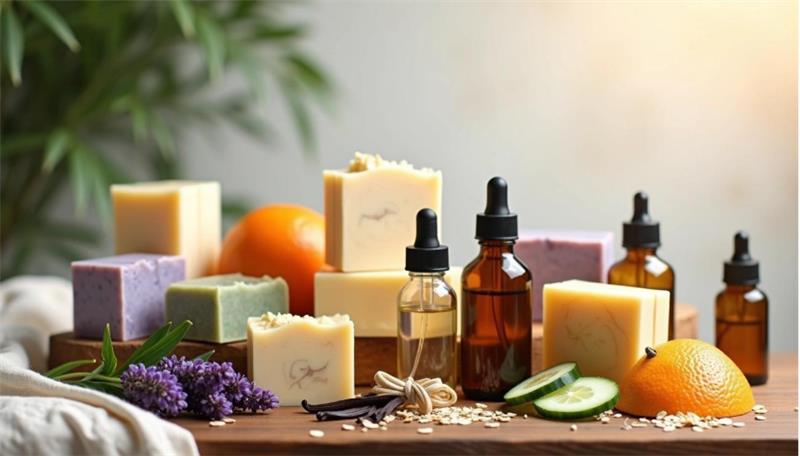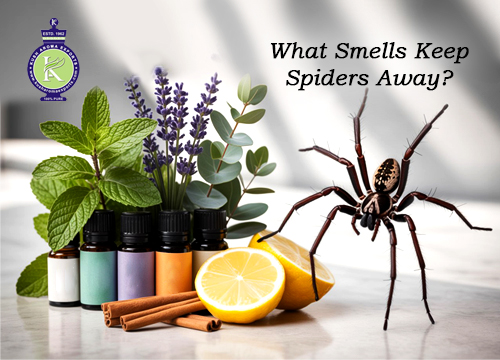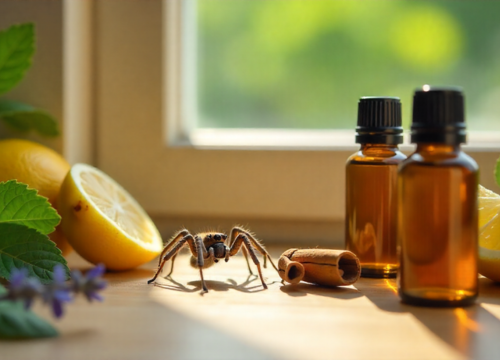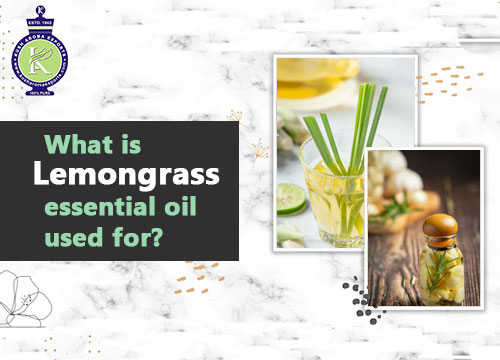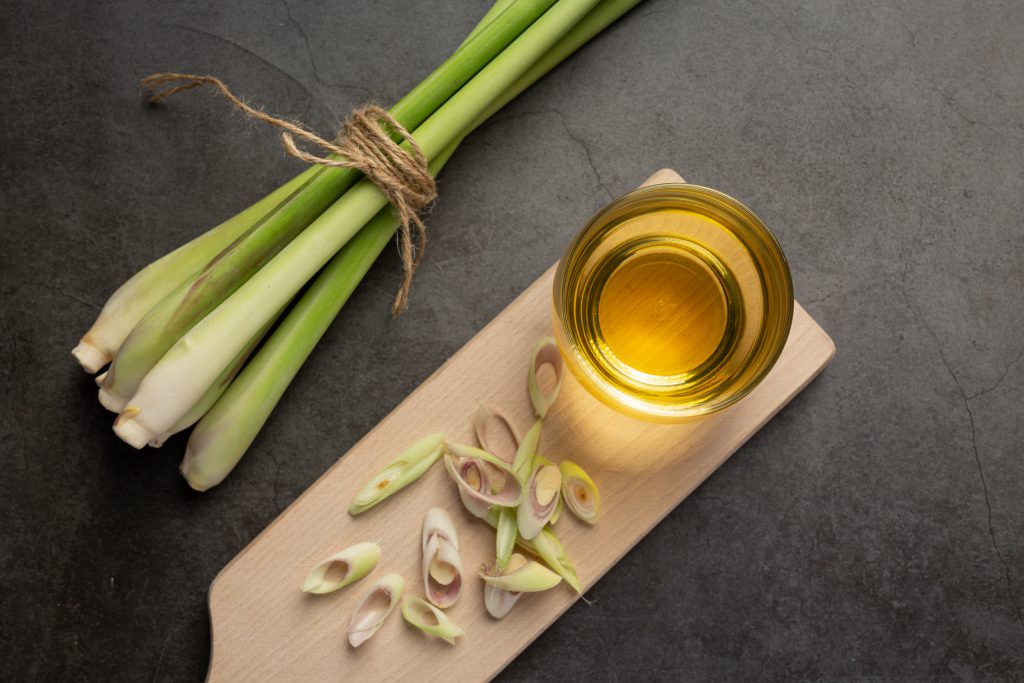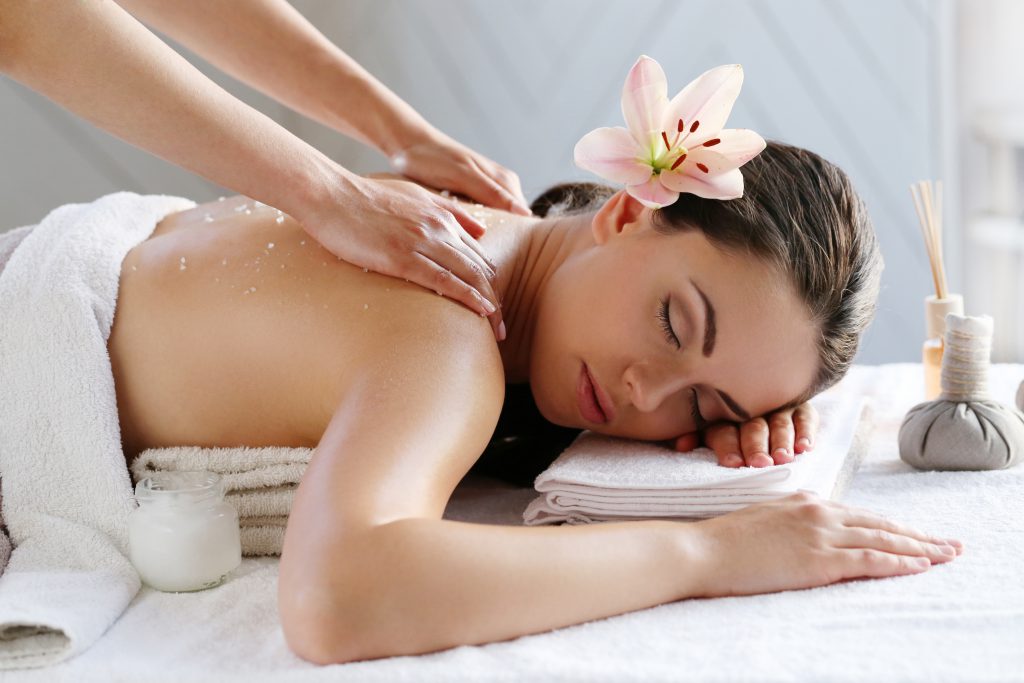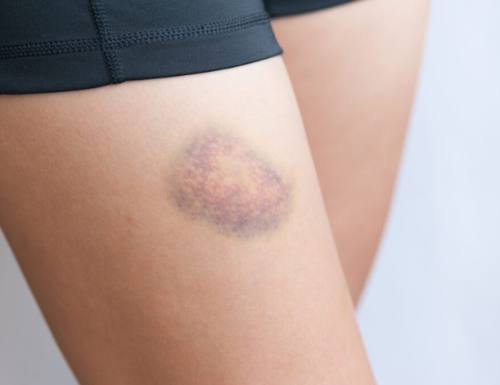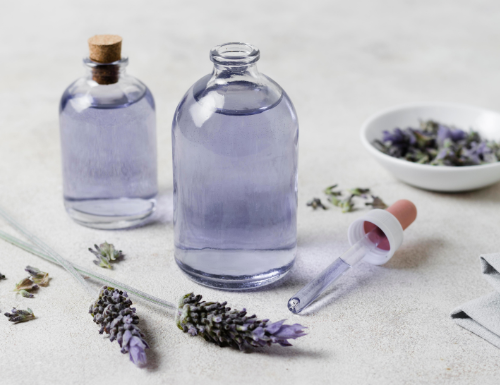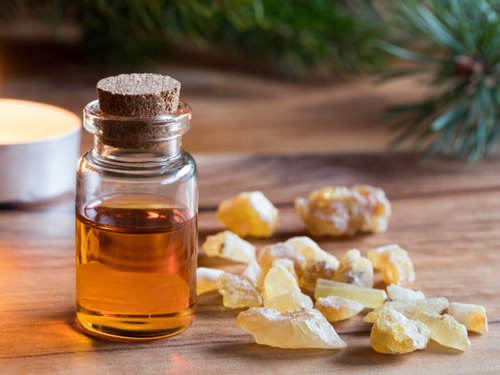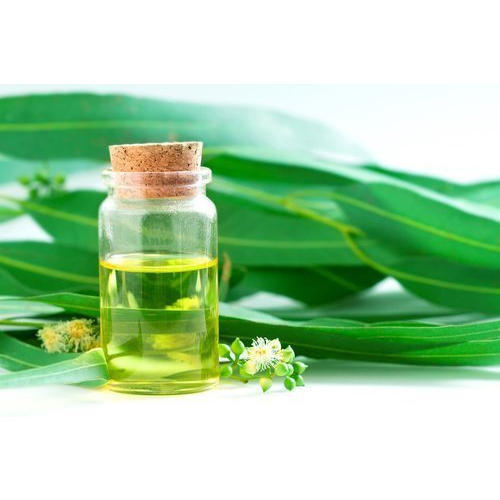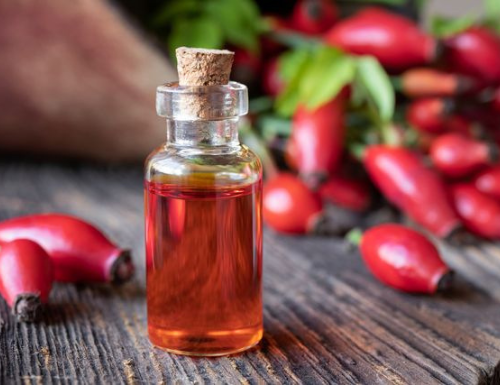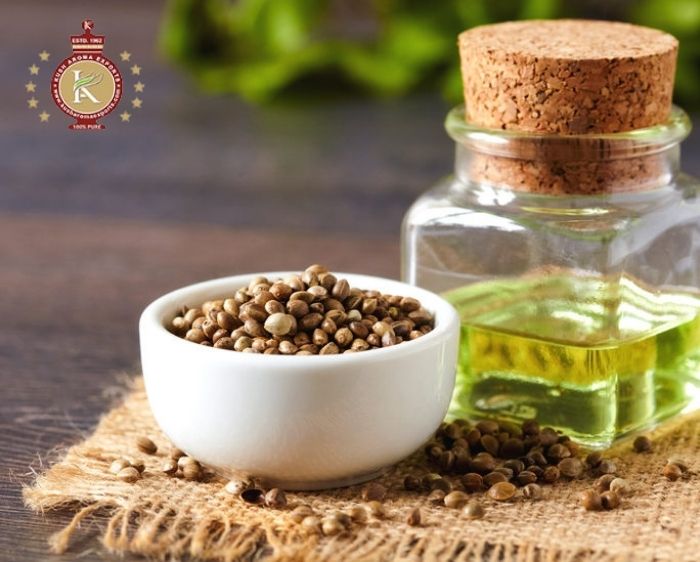Choosing the best soap scents for your cold process soap can feel like navigating a fragrance jungle. After testing over 200 different fragrances in our soap making business, we’ve discovered which ones truly stand the test of time and customer preference.
Cold process soap offers incredible benefits for those seeking natural ingredients that support and heal skin conditions. However, finding the perfect fragrance can be both delightful and challenging. From classic florals like lavender—consistently the number one floral scent—to refreshing citrus and soothing eucalyptus, the options are vast. In fact, some essential oils like lavender have become prohibitively expensive in recent years, reaching at one point over two thousand dollars per kilo
That’s why we’ve compiled this definitive list of the 15 best fragrance oils for soap making—carefully tested and proven through our extensive experience. Whether you’re just starting your soap making journey or looking to expand your fragrance collection, these scents will ensure your cold process soap not only feels amazing but smells delightful too.
Vanilla
Vanilla stands as a cornerstone among the best soap scents, offering a sweet and comforting aroma that appeals to almost everyone. This classic fragrance brings warmth and familiarity to cold process soap creations.
Vanilla scent profile
- Sweet and warm with complex aromatic notes that create a comforting atmosphere
- Features buttercream top notes with middle notes of cake and vanilla, rounded out by base notes of bourbon and sugar
- Provides a classic gourmand fragrance suitable for any season or occasion
- Some vanilla fragrances offer added complexity with subtle fruit, floral, and coconut undertones
- Creates a calm and soothing ambiance, making it perfect for relaxation-focused soaps
Vanilla mixing potential
- Exceptionally versatile – blends beautifully with numerous other fragrance families
- Works wonderfully with:
- Fruit scents like grapefruit and orange essential oils
- Woody fragrances such as white birch and smoked oud
- Sweet gourmand scents like snickerdoodle
- Adds depth and warmth to other fragrances without overwhelming them
- Serves as an excellent “anchor” scent in complex fragrance blends
- Considered a staple in any soap maker’s fragrance collection
Vanilla cold process performance
Despite its popularity, vanilla presents several challenges in cold process soap making:
- Contains vanillin, an organic compound that causes significant discoloration
- Discolors from light tan to deep chocolate brown depending on vanillin percentage
- Discoloration is a natural process that begins as vanilla pods ripen
- Vanilla Color Stabilizer works well for melt and pours soap but gives inconsistent results in cold process
- For fragrances with low vanilla content, titanium dioxide can lighten discoloration
- Most vanilla fragrance oils perform well in cold process soap despite the color change
- Some vanilla fragrance oils may cause acceleration or separation issues
- Natural vanilla extracts and flavoring should not be used in place of proper fragrance oils
For cold process soap makers seeking the best fragrance oils, embracing vanilla’s natural tendency to discolor often yields better results than fighting it. Furthermore, incorporating the brown color into your design can create beautiful, chocolatey-looking soaps that complement the delicious scent.
Lavender
Among the best soap scents, lavender reigns as the queen of floral fragrances in cold process soap making. This timeless essential oil brings both healing properties and universal appeal to handcrafted soaps.
Lavender scent profile
- Offers an authentic, herbaceous, and floral aroma directly from the plant
- Primarily available in two main types:
- Lavandula angustifolia (English lavender) – sweeter, more traditional profile
- Lavandula latifolia (lavender spike oil) – contains notes of camphor and herbs
- Features a crisp, clean fragrance making it a favorite among soap makers and users alike
- Lavender 40/42 is standardized for consistent scent, leaning toward an herbaceous floral with balsamic undertones
Lavender mixing potential
- Exceptionally versatile – blends well with virtually any scent
- Creates excellent combinations with:
- Base notes: patchouli, cedarwood, frankincense, vetiver
- Citrus: orange, lemon for balanced and refreshing blends
- Herbal: rosemary for mental clarity, eucalyptus for respiratory support
- Can stand alone as a single fragrance or enhance complex scent combinations
- Works beautifully in both minimalist and elaborate soap formulations
Lavender cold process performance
- : 0.5 to 1 ounce per pound of oils (3-6% of total oil weight) Recommended usage rate
- For stronger, lasting scent, aim for the higher end (4-5%) as lavender can fade during cure
- Add essential oils at cooler trace temperatures (90-100°F) to help retain scent
- Anchoring techniques to preserve fragrance:
- Add small amounts of kaolin clay (1 tsp per pound of oils)
- Store curing soaps in cool, dark, ventilated areas
- Provides therapeutic benefits beyond fragrance:
- Anti-inflammatory and mild antimicrobial properties
- Helps clear acne, calm eczema, and speed wound healing
- Pairs beautifully with natural colorants like alkanet root for purple hues
Lavender essential oil ultimately creates a calming experience that can reduce stress, relieve headaches, and promote better sleep—benefits that transfer directly to your handcrafted soaps.
Oatmeal Milk & Honey
Oatmeal Milk & Honey represents a comforting classic among the best soap scents, consistently appearing as a top seller for soap makers nationwide. Its familiar, nostalgic aroma instantly evokes feelings of warmth and coziness.
Oatmeal Milk & Honey scent profile
- Features a wonderful fresh aroma of Hawthorne with creamy French vanilla, soy milk, and nutty almond base notes
- Creates a comforting and nostalgic blend reminiscent of warm oatmeal cookies without being overpowering
- Includes primary scent components:
- Top notes: Almond, oats
- Middle notes: Tonka bean
- Base notes: Musk, vanilla bean, honey
- Offers subtle hints of spice from clove and tonka bean in some formulations
- Presents a fragrance like a warm almond cookie – soothing and slightly sweet
Oatmeal Milk & Honey mixing potential
- Works beautifully when blended with:
- Vanilla for enhanced sweetness
- Almond to amplify the nutty undertones
- Light floral scents for dimension
- Contains, affecting mixing ratios approximately 0.52% vanillin and 1.06% ethyl vanillin
- Pairs well with complementary fragrances that enhance its warm, comforting profile
- Maintains its distinct character even in complex blends
- Performs consistently in various soap formulations without overwhelming other scents
Oatmeal Milk & Honey seasonal appeal
- Considered “the perfect comfort scent for fall and winter” by many soaps makers
- Often labeled a “seasonal favorite” by manufacturers and customers alike
- Contains which produces a light tan to brown discoloration – perfectly matching its warm seasonal character1-2.5% vanilla
- Appeals primarily to those seeking comfort scents during colder months
- Performs excellently year-round but experiences peak popularity during autumn and holiday seasons
- Evokes feelings of home, warmth, and nostalgia – particularly appealing during seasonal transitions
- Complements fall and winter soap collections with its cozy, nurturing character
Orange (5x Natural)
Orange 5x Natural essential oil brightens any soap maker’s collection with its vibrant citrus punch, making it a standout option among the best soap scents. This concentrated version solves the typical fading issues that plague regular orange oils in cold process soap making.
Orange scent profile
- Delivers an intense, fruity aroma reminiscent of fresh orange peels
- Offers a concentrated citrus experience that’s significantly stronger than regular orange essential oil
- Appears as a thin, dark orange to golden brown liquid
- Acts as a middle note in fragrance compositions
- Contains, a chemical known for its antioxidant properties heightened levels of limonene
- Presents a sweet, refreshing quality that uplifts mood and reduces anxiety according to clinical studies
Orange mixing potential
- Blends exceptionally well with:
- Floral oils like lavender
- Other citrus oils including bergamot and lemon
- Spice oils such as cinnamon bark and clove bud
- Woody scents including sandalwood
- Works perfectly in citrus-forward blends while maintaining its distinctive character
- Enhances complexity in fragrance combinations without overwhelming other notes
- Functions beautifully in essential oil blends at varying ratios depending on desired strength
Orange cold process performance
- Excels where regular citrus oils fail – survives saponification
- of cold process soap Recommended usage rate: 0.7-1 ounce per pound
- Contributes a natural orange color to soap, ranging from yellow to bright orange
- May cause slight color fading over the curing period, often leaving a light-yellow tinge
- Maintains strong scent even after the mandatory 6-week curing time
- Tends to break up trace slightly, requiring good stirring after addition
- Performs significantly better than regular orange essential oil which typically fades within a week
- Creates stunning visual effects when paired with natural colorants like paprika
For soap makers seeking authentic citrus scents, this concentrated version proves itself worth every penny through its longevity and true-to-fruit aroma.
Black Raspberry Vanilla
Black Raspberry Vanilla represents one of the best soap scents for cold process soap makers seeking a crowd-pleasing fragrance that performs reliably. This popular scent has earned its reputation through consistent customer satisfaction and excellent performance.
Black Raspberry Vanilla scent profile
- Delivers a smooth, fruity fragrance bursting with ripe berries and creamy vanilla notes
- Features distinctive layers of aroma:
- Top notes: Black cherry, bergamot, lemon
- Middle notes: Raspberry, strawberry, plum, violet
- Base notes: Musk, vanilla, sugar
- Creates a perfect balance between sweet dark berries and velvety vanilla
- Presents as a sweet mix that includes hints of plum wine, orchid, and cashmere
- Appears light yellow to yellow in the bottle before use
Black Raspberry Vanilla mixing potential
- Blends exceptionally well with complementary fragrances:
- Lemon Pound Cake and Limoncello Creme for citrusy warmth
- Cranberry Prosecco for enhanced berry notes
- Strudel and Spice for added dimension
- Offers alternative branding possibilities including Raspberry Sorbet, Berry Dreamsicle, and Sugared Berries
- Pairs beautifully with purple, violet, and burgundy colorants
- Contains, minimizing compatibility issues 0% vanilla content
Black Raspberry Vanilla cold process performance
- Behaves exceptionally well in cold process soap formulations
- Shows no acceleration or ricing, remaining fluid for intricate designs and swirls
- Exhibits mild discoloration ranging from none to cream or light yellow
- Maintains strong scent retention throughout the curing process
- Receives consistently high customer ratings (based on 196 reviews) 4.5 out of 5 stars
- Recommended usage rate for cold process soap: 2.0-4.1%
- Performs well with various base oil combinations
- Has become a favorite among soapmakers specifically because it behaves well in soap
Indeed, this fragrance has earned its place in many soap makers’ essential collections through reliability and customer appeal.
Almond
A classic choice among the best soap scents, almond fragrance oil delivers a sweet, nutty aroma that consistently draws customers back for more. Its timeless appeal makes it a staple in any soap maker’s fragrance collection.
Almond scent profile
- Offers a warm, classic nutty almond aroma that appeals to all age groups and genders
- Creates a sweet scent reminiscent of baking extracts and pastries
- Presents a clean, familiar fragrance that customers consistently rate highly
- Belongs to the sweet scent family with a comforting, inviting character
- Appears as a clear oil in the bottle before use
Almond mixing potential
- Pairs excellently with:
- Oatmeal Milk & Honey for a delicious, customer-favorite blend
- Vanilla to create Vanilla Almond—a fragrance with nose-catching sharpness and sweetness
- Honey to produce Sweet Honey Almond soap formulations
- Coconut for creating Coconut Almond variations
- Functions well in both standalone applications and complex blends
Almond cold process performance
- Performs exceptionally well in cold process soap making
- Shows no acceleration or separation in typical soap formulations
- Produces a light tan discoloration after cure
- Contains approximately 1-4% vanilla content, contributing to slight discoloration
- Recommended usage rate for cold process soap: 3.6%
- Maintains strong scent retention throughout and after the curing process
- Creates no ricing issues, allowing for intricate designs
Additionally, almond fragrance oil works wonderfully across various product applications beyond soap, including candles, bath bombs, and body lotions, making it a versatile addition to any formulator collection.
Sandalwood
Sandalwood stands out as a premium choice among the best soap scents, prized for its sophisticated woody character and exceptional performance in cold process formulations.
Sandalwood scent profile
- Offers a warm, woody, and creamy aroma highly appreciated for its pleasant character
- Contains marker compounds (Z)-α- and β-santalol that give it distinctive qualities
- Varies in quality based on origin, with Southern Indian sandalwood considered superior
- Provides a deep, rich aromatic experience that adds a distinct touch to soap
- Features warm undertones that create a sophisticated base in fragrance blends
- Creates a noticeable yet balanced fragrance intensity that’s neither overwhelming nor subtle
Sandalwood mixing potential
- Blends exceptionally well with:
- Vanilla for a soft, warm scent combination
- Lavender for a floral-woody profile
- Citrus oils for bright, balanced compositions
- Rose for mature, romantic scent profiles
- Amber for a warm, luxurious finish
- Works across various soap formulations from solid bars to liquid blends
- Serves as an excellent base note, helping anchor other fragrances and adding longevity
Sandalwood cold process performance
- Performs reliably in cold process soap making without significant behavioral issues
- Contains no vanilla, resulting in no discoloration in most formulations
- Features a clear oil color in the bottle before use
- Works effectively with oils like shea butter and coconut oil for creamy lather
- Commands premium pricing due to its quality and scarcity
Notably, the yield and quality of sandalwood oil vary with climate conditions, ranging between with higher yields from Southern India. Consequently, this makes authentic sandalwood one of the most coveted yet challenging fragrance oils to source artisan soap makers.1.5-5.1%
Patchouli
Patchouli essential oil delivers an assertive, distinctive character that makes it a polarizing yet essential addition to the best soap scents collection. This deep, earthy fragrance creates memorable soaps that stand out from conventional offerings.
Patchouli scent profile
- Features an earthy, smoky scent that makes a bold statement
- Belongs to the spicy scent family with rich, complex undertones
- Appears as a brown oil in the bottle before use
- Contains crisp green top notes with patchouli middle notes and woody, musky base notes
- Presents an assertive fragrance that elicits strong opinions
- , steam distilled from the leaves of the plant Originates from Indonesia
Patchouli mixing potential
- Demonstrates exceptional versatility with numerous fragrance families
- Blends wonderfully with:
- Floral notes for balanced compositions
- Citrus oils like lime and orange for brightness
- Vanilla and gourmand scents for depth
- Minty fragrances for fresh combinations
- Adds depth and complexity to various scent profiles
- Serves as an effective base note to fix fleeting citrus scents in cold process soap
- Creates especially popular combinations with orange essential oil
Patchouli cold process performance
- Shows mild acceleration in cold process soap formulations
- Produces light yellow discoloration in the final soap
- Maintains strong scent retention throughout curing
- Features a, affecting when to add during production flashpoint of 200°F
- Performs consistently across various soap formulations
- Offers a shelf life of 1-2 years when properly stored
- Works effectively in both cold process and melt and pour applications
Overall, patchouli delivers reliable performance alongside its distinctive character, creating memorable soaps that retain their fragrance throughout use.
Cool Water
Cool Water brings a masculine aquatic dimension to the best soap scents lineup, offering a refreshing alternative to traditional fragrances. This designer-type fragrance has gained tremendous popularity among soap makers for its universal appeal.
Cool Water scent profile
- Creates a sophisticated Fougere fragrance with crisp marine elements
- Features distinctive layered notes:
- Top notes: Cooling mint, citrus, black currant, pineapple
- Middle notes: Lavender, geranium, jasmine, orange flower, fir needle [364]
- Base notes: Cedarwood, musk, amber, oakmoss, tonka bean [364]
- Delivers a fresh, clean masculine scent reminiscent of the popular Davidoff cologne
- Presents as a refined blend of marine and green notes with cooling mint
Cool Water mixing potential
- Combines excellently with:
- Lavender to enhance the existing middle notes
- Citrus oils for a brighter top note profile
- Woody fragrances to strengthen the base notes
- Creates versatile blends that maintain the distinctive masculine character
- Works effectively across multiple product applications including soaps, lotions, and candles
Cool Water cold process performance
- Performs reliably in cold process soap making with no acceleration issues
- Shows minimal to no discoloration after cure, allowing for precise color work
- Maintains strong scent retention throughout the curing process [382]
- Works well at usage rates between 2.5-5% of oil weight
- Enables formulators to create blue and white swirl designs without worrying about discoloration
- Recommended for men’s soap lines yet appeals broadly across genders [382]
As a result, Cool Water stands as an essential fragrance for soap makers seeking reliable performance with strong consumer appeal.
Bay Rum
Bay Rum captivates soap makers with its , offering a traditional barbershop fragrance that has maintained popularity for generations among the best soap scents. Timeless masculine appeal
Bay Rum scent profile
- Features rich, spicy notes of clove, cinnamon, and patchouli
- Balanced with complementary hints of pine, musk, vanilla, apple, and orange
- Combines traditional bay leaf and rum notes creating a sophisticated masculine aroma
- Creates an inviting and invigorating experience perfect for free-spirited souls
- Contains crisp pine needle notes that enhance its fresh character
- Often described as warm and exotic with jasmine undertones
Bay Rum mixing potential
- Pairs excellently with:
- Patchouli for enhanced depth and complexity
- Sweet orange to brighten the spicy base
- Apple notes for a subtle fruity dimension
- Works well in formulations containing crushed cloves and cinnamon sticks
- Often combined with crisp pine needles for a refreshing twist
- Functions as a versatile base for multiple soap applications
Bay Rum cold process performance
- Tends to during saponification process accelerate trace speed
- Performs well in various oil bases including coconut, olive, and sustainable palm
- Works effectively with natural colorants like activated charcoal for visual appeal
- Creates luxurious, creamy lather in properly formulated recipes
- Produces bars with long-lasting fragrance retention throughout use
- Remains stable in properly cured cold process soap formulations
This traditional fragrance brings a timeless quality to soap creations while delivering a satisfying masculine profile that continues to attract customers seeking distinctive alternatives to contemporary scents.
Lemongrass
Lemongrass essential oil stands as a refreshing staple among the best soap scents, offering powerful staying power and distinctive aromatic qualities that make it highly valued in soap making.
Lemongrass scent profile
- Delivers a fresh, lemony scent with earthy and sweet undertones
- Features tremendous staying power compared to other citrus scents
- Presents as light-yellow liquid before use in formulations
- Offers a sweet, oriental lemon fragrance when steam distilled
- Belongs to the fruity scent family with citrus characteristics
Lemongrass mixing potential
- Creates excellent blends with:
- Lavender for a balanced floral-citrus combination
- Cedarwood for earthy depth
- Lemon for enhanced citrus notes
- Rosemary for a revitalizing aroma
- Works wonderfully in natural formulations seeking therapeutic qualities
- Adds bright, clean notes to more complex fragrance compositions
Lemongrass cold process performance
- Shows no acceleration when added at trace
- Develops light orange discoloration in finished soap
- Maintains light scent retention throughout curing process
- Features a flashpoint of 174-185°F
- Maintains strong scent for up to 6 months in properly cured bars
Moreover, for those creating natural soap formulations, lemongrass carries antimicrobial and antioxidant properties through its active components (α-citral, β-citral, myrcene, and eugenol).
Cucumber Melon
Crisp cucumber balanced with sweet honeydew creates a refreshing fragrance that ranks consistently among the best soap scents for those seeking summer freshness year-round.
Cucumber Melon scent profile
- Delivers a refreshing blend of crisp cucumber and juicy honeydew melon notes
- Features distinct layered aromatics:
- Top notes: Cucumber and green oily notes
- Middle notes: Violet
- Base notes: Sweet honeydew melon
- Creates a bright, soothing, summery fragrance experience
- Combines sweet and sour cucumber elements with deep green notes
- Produces a clean, uplifting aroma reminiscent of garden-fresh produce
Cucumber Melon mixing potential
- Performs reliably in cold process soap making
- Works well at standard fragrance oil usage rates
- Maintains its distinctive character even when paired with other scents
- Holds up well during saponification without causing acceleration
- Primarily functions as a standalone fragrance rather than a blending component
Cucumber Melon seasonal appeal
- Recognized as “perfect for steamy summer days”
- Often considered a seasonal soap, yet many manufacturers carry it year-round
- Naturally associated with summer freshness and cooling effects
- Rated highly (3.9 out of 5) by customers seeking refreshing fragrances
- Described as “fan favorite seasonal soap” by artisan makers
- Evokes the feeling of “summer produce in your shower” without the gardening work
- Offers a “mini spa getaway” feeling with its fresh, clean character
Cotton Blossom
Cotton Blossom emerges as an elegant addition to the best soap scents lineup with its fresh, airy quality that customers repeatedly request for its clean, sophisticated character.
Cotton Blossom scent profile
- Emanates a clean, fresh fragrance blending cotton, mandarin blossoms, freesia and peonies
- Contains and resins with natural and synthetic aroma components 10.4% of essential oils
- Features distinctive layers:
- Notes of grass and sun-dried linen accord
- Mandarin blossom and jeans accord
- Peony, cotton, musk and baby powder
- Creates a sensory experience reminiscent of fresh laundry blowing in a gentle breeze
- Offers a light vanillin content of just 0.2%
- Evokes the feeling of “clean skin after a hot shower” according to many users
Cotton Blossom mixing potential
- Pairs wonderfully with lavender to create familiar yet sophisticated combinations
- Functions effectively across multiple applications:
- Cold process soap
- Body sprays and lotions
- Soy wax candles and melts
- Often used as a standalone fragrance for its distinctive, beloved character
- Remains consistent through various formulation types
Cotton Blossom cold process performance
- Shows slight acceleration during saponification process
- Exhibits variable behavior regarding ricing – most reports indicate none while others note moderate ricing
- Cures to a light-yellow color
- Maintains its scent profile exceptionally well through curing
- Performs best at 5.30% usage rate in cold process formulations
- Works beautifully with light blue colorants for esthetically pleasing bars
- Creates no separation issues in properly formulated bases
Aloe
Seeking a clean, fresh fragrance among the best soap scents? Aloe fragrance oil provides a spa-like experience that performs surprisingly well in cold process soap formulations.
Aloe scent profile
- Offers a clean, fresh spa-like aroma that works as a neutral fragrance base
- Features a complex fragrance structure:
- Top notes: Yucca, melon, prickly pear
- Middle notes: Lemon, lime
- Bottom notes: Heliotrope, clover
- Contains floral, sandalwood, cedarwood, and citrus elements
- Creates a pure, fresh atmosphere without overwhelming scent intensity
Aloe mixing potential
- Works effectively in multiple applications:
- Soap making (both cold process and melt-and-pour)
- Candles and wax melts
- Personal care products including shampoo bars
- Functions well in laundry detergent formulations
- Serves as an excellent “clean” or “neutral” fragrance base
Aloe cold process performance
- Performs exceptionally well with no acceleration or separation issues
- Holds scent remarkably well throughout curing process
- Behaves beautifully despite containing floral notes that typically cause problems
- Adds silkiness and luxurious feel when real aloe is incorporated
- Enhances lather quality in finished soap bars
- Works at standard fragrance oil usage rates
Luv Spell
Inspired by Victoria’s Secret Love Spell, this enchanting fragrance ranks among the best soap scents for crafters seeking a complex yet well-behaved fragrance oil.
Luv Spell scent profile
- Features a sophisticated blend of:
- Top notes: Bergamot, bright peach, strawberry, grapefruit, apple
- Middle notes: Apple blossom, African tamarind, Damask rose, cherry blossom, hydrangea [601]
- Base notes: Tonka bean, coconut milk, white musk, vanilla, powder [601]
- Appears yellow in the bottle before use
- Contains 0.00% vanilla content, minimizing discoloration concerns
- Delivers a luscious, fruity-floral character that maintains popularity across seasons
- Creates a balanced feminine fragrance with both sweet and sophisticated qualities
Luv Spell mixing potential
- Blends exceptionally well with:
- Magnolia and Peony for enhanced floral complexity
- Peach Nectar for amplified fruit notes
- Sparkling Grapefruit for brightened citrus elements
- Functions effectively across multiple applications including soaps, lotions, and candles
- Maintains its distinctive character while complementing other scents
- Works well in both simple and complex fragrance formulations
Luv Spell cold process performance
- Behaves remarkably well in cold process soap making
- Shows no acceleration during saponification process
- Presents no separation issues in properly formulated bases
- Stays fluid with slow trace, ideal for complex swirl designs
- Exhibits mild yellow discoloration after cure
- Recommended usage rate: 2.0-6.0% for cold process soap
- Maintains pleasant, mild scent retention throughout curing
Comparison Table
| Fragrance | Main Notes | Best Mixing Combinations | Cold Process Performance | Special Characteristics |
| Almond | Sweet, nutty, warm | Oatmeal Milk & Honey, Vanilla, Honey, Coconut | No acceleration, slight tan discoloration | Contains 1-4% vanilla content |
| Aloe | Fresh, spa-like with yucca, melon, citrus | Works well in multiple applications | No acceleration or separation | Enhances lather quality |
| Bay Rum | Spicy, clove, cinnamon, patchouli | Patchouli, Sweet Orange, Apple | Accelerates trace | Traditional barbershop scent |
| Black Raspberry Vanilla | Berry, vanilla, musk | Lemon Pound Cake, Cranberry Prosecco | No acceleration or ricing | 0% vanilla content |
| Cool Water | Marine, mint, citrus, musk | Lavender, Citrus, Woody fragrances | No acceleration, minimal discoloration | Popular masculine scent |
| Cotton Blossom | Fresh, clean, floral | Lavender | Slight acceleration, light yellow color | Contains 10.4% essential oils |
| Cucumber Melon | Fresh cucumber, honeydew | Works best as standalone | Good performance, no acceleration | Popular summer fragrance |
| Lavender | Herbaceous, floral | Patchouli, Citrus, Rosemary | Best at 90-100°F trace temperature | Most popular floral scent |
| Lemongrass | Citrus, earthy, sweet | Lavender, Cedarwood, Lemon | No acceleration, light orange discoloration | Strong staying power |
| Luv Spell | Fruity-floral, peach, cherry | Magnolia, Peony, Peach Nectar | No acceleration, mild yellow discoloration | 0% vanilla content |
| Oatmeal Milk & Honey | Warm, nutty, sweet | Vanilla, Almond | Light tan to brown discoloration | Contains 1-2.5% vanilla |
| Orange (5x Natural) | Intense citrus, fruity | Lavender, Bergamot, Sandalwood | Breaks up trace slightly | Concentrated version |
| Patchouli | Earthy, smoky, musky | Floral notes, Citrus, Vanilla | Mild acceleration | Strong, polarizing scent |
| Sandalwood | Warm, woody, creamy | Vanilla, Lavender, Citrus, Rose | No significant issues, no discoloration | Premium fragrance |
| Vanilla | Sweet, warm, gourmand | Fruit scents, Woody fragrances | Significant brown discoloration | Contains vanillin |
Conclusion
Exploring these 15 soap scents certainly reveals why they’ve stood the test of time in cold process soap making. After testing hundreds of fragrances over the years, these consistently perform well while delighting customers.
When selecting scents for your next soap batch, remember:
- Each fragrance behaves differently during saponification – some accelerate trace while others remain perfectly stable • Vanilla content often determines discoloration levels, with higher percentages creating deeper brown tones • Complementary scent combinations can create signature blends that set your products apart • Usage rates typically range from 3-6% of oil weight for optimal performance. Essential oils generally require more careful handling than fragrance oils due to their natural properties
Additionally, considering your target audience helps narrow down your fragrance selection. Cool Water and Bay Rum appeal strongly to masculine preferences, whereas Black Raspberry Vanilla and Luv Spell tend to attract those seeking feminine scents.
The comparison table provides a quick reference guide when planning your next soap batch. Undoubtedly, starting with versatile options like Lavender, Vanilla, and Oatmeal Milk & Honey gives you a solid foundation before experimenting with more complex fragrances.
Though mastering soap scents takes time and experience, these fifteen proven performers offer reliable results for both beginners and seasoned soap makers alike. Whether you prefer natural essential oils or well-crafted fragrance oils, this collection provides exceptional options for creating memorable, aromatic soap that customers will love.
What’s your favorite soap scent from this list? Perhaps you’ll discover a new favorite to incorporate into your next creative soap making session!
FAQs
Q1. What are some popular scents for homemade soap?
Some popular soap scents include lavender, vanilla, oatmeal milk & honey, citrus scents like lemongrass and orange, and fresh scents like cucumber melon. Floral, fruity, and clean scents tend to be customer favorites for handmade soaps.
Q2. How do I choose fragrance oils for cold process soap making?
When selecting fragrance oils for cold process soap, consider factors like scent strength, behavior during saponification (acceleration, ricing, etc.), discoloration potential, and customer appeal. Always check usage rates and test new fragrances in small batches before scaling production.
Q3. What are some good fragrance combinations for soap? Popular fragrance combinations include lavender and vanilla, citrus and herb blends like lemongrass and rosemary, fruity-floral mixes like black raspberry vanilla, and complementary scents like sandalwood and rose. Experiment with different ratios to create unique, appealing blends.
Q4. How much fragrance should I use in cold process soap? The typical usage rate for fragrance oils in cold process soap is between 3-6% of the total oil weight in your recipe. However, always check the specific recommendations for each fragrance oil, as some may require lower or higher amounts for optimal performance and scent throw.
Q5. Do essential oils or fragrance oils work better in soap making?
Both essential oils and fragrance oils can work well in soap making, but they have different characteristics. Essential oils are natural but can be more expensive and may fade faster. Fragrance oils are often more affordable, have a wider scent range, and tend to have better scent retention in soap. The choice depends on your preferences and target market.

